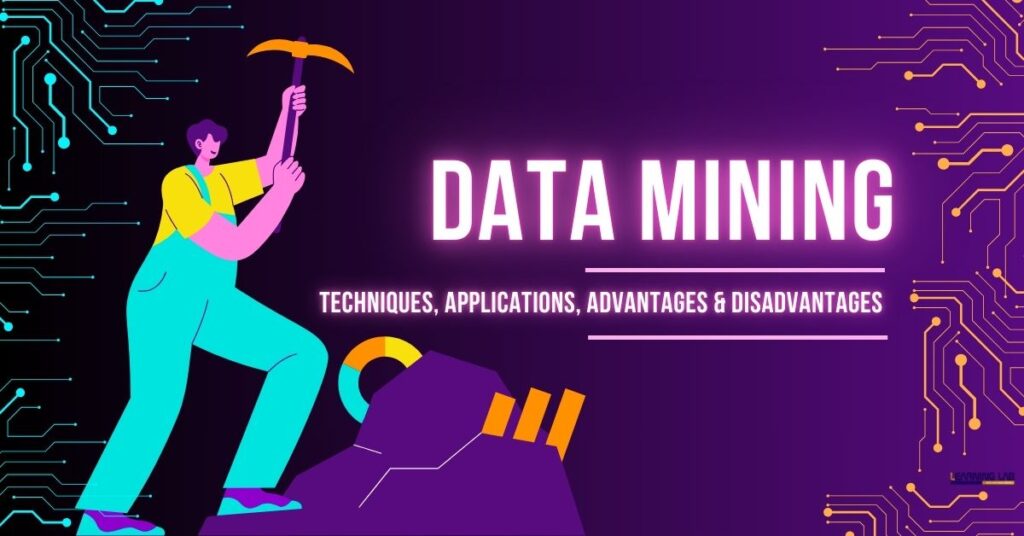Data Mining In Data Science: Data mining in data science is one of the most transformative technologies shaping our world today.
From discovering patterns in massive datasets to predicting future trends, data mining has become a cornerstone of data science practices. But what exactly is data mining? Why is it important, and how can you make use of it to its full extent?
What Is Data Mining in Data Science?
Data mining in data science refers to the process of extracting useful information from large datasets. By applying algorithms and statistical methods, data scientists can identify hidden patterns, correlations, and trends that help organisations make data-driven decisions.
“Data is the new oil, and data mining is the refinery,” said Clive Humby, a British mathematician.
His words resonate with today’s data-driven ecosystem, where mining valuable insights is key to competitive advantage.

Data Mining Techniques in Data Science
Several techniques are employed in data mining to derive insights:
- Classification: Categorising data into predefined groups.
- Clustering: Grouping similar data points together based on shared characteristics.
- Regression: Predicting continuous values using historical data.
- Association rule learning: Identifying relationships between different variables.
- Anomaly detection: Detecting outliers that deviate from the norm.
- Text mining: Analysing textual data for insights and trends.
Each technique serves a specific purpose and can be applied depending on the objective of the analysis.
Applications of Data Mining
The applications of data mining are vast and span across industries and they are as follows:
- Healthcare: Predicting diseases, optimising treatment plans, and analysing patient data.
- Retail: Improving customer segmentation, inventory management, and recommendation systems.
- Banking: Detecting fraud, assessing credit risks, and managing portfolios.
- Education: Enhancing student performance and predicting academic success.
- Entertainment: Powering recommendation engines for platforms like Netflix and Spotify.
Imagine being able to forecast customer preferences or detect fraud with precision—that’s the power of data mining in data science.
Process Of Data Mining
The process of data mining involves several systematic steps:
- Data collection: Gathering data from various sources such as databases, sensors, or online platforms.
- Data cleaning: Ensuring the data is free from errors, duplicates, and missing values.
- Data transformation: Converting data into a usable format for analysis.
- Pattern discovery: Using algorithms to detect meaningful patterns or relationships.
- Evaluation: Assessing the discovered patterns to ensure their relevance and accuracy.
- Deployment: Applying the insights to real-world applications and decision-making.
Mastering this process requires both theoretical knowledge and hands-on experience. ZELL’s specialised courses on data mining in data science guide students through every step with practical examples and real-world projects.

Tools of Data Mining
Effective data mining relies on powerful tools that simplify the analysis process. Some widely used tools of data mining include the following:
- Python and R: Popular for statistical computing and machine learning.
- Weka: An open-source tool for data preprocessing and modelling.
- RapidMiner: A comprehensive platform for data preparation and analysis.
- Tableau: Renowned for its data visualisation capabilities.
Learning these tools is essential for aspiring data scientists. At ZELL, we offer hands-on training to help you master these tools and apply them in real-world scenarios.
Advantages and Disadvantages of Data Mining
Advantages of data mining:
- Improved decision-making: Provides data-driven insights for better strategies.
- Cost efficiency: Optimises resource allocation and reduces operational costs.
- Fraud detection: Identifies anomalies to prevent financial losses.
- Personalised experiences: Helps tailor products and services to customer preferences.
- Competitive edge: Gives organisations a strategic advantage in their respective markets.
Disadvantages of data mining:
- Privacy concerns: Raises ethical issues regarding data security and misuse.
- High implementation costs: Requires significant investment in tools and expertise.
- Dependence on data quality: Results are only as good as the data being analysed.
- Complexity: Demands skilled professionals to handle intricate algorithms and tools.
Benefits of Data Mining for Individuals and Businesses
The benefits of data mining are evident in its ability to:
- Empower individuals: Deliver personalised recommendations and improved user experiences.
- Boost business growth: Drive marketing strategies, enhance operations, and improve risk management.
Consider how e-commerce platforms predict your next purchase or how banks detect fraudulent transactions. These real-world examples demonstrate the practical benefits of data mining in data science.
Why Choose ZELL to Learn Data Mining?
At ZELL, we understand the growing importance of data mining in data science. Our courses provide:
- In-depth knowledge: Training on data mining techniques and tools.
- Real-world exposure: Practical projects to bridge the gap between theory and application.
- Placement assistance: Support to help you land your dream job in data science.
Whether you’re a fresher or a professional looking to upskill, ZELL’s programs are designed to meet your needs.

On A Final Note…
Data mining in data science is a game-changer, offering unparalleled opportunities to extract value from data. Its applications, techniques, and tools empower individuals and organisations alike to make smarter decisions and stay ahead of the competition. However, it’s essential to balance its advantages with ethical considerations and technical challenges.
Are you ready to explore the exciting world of data mining? Join ZELL today!





